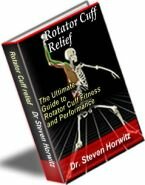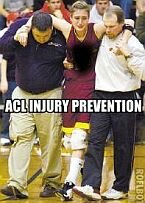Knee Patellar Tendinitis
Each summer, Dr. Steve Horwitz sees an increase in patients that complain of knee pain from running, cycling or jumping activities. One of the most common complaints is of pain directly below the patella (knee cap). This is a condition known as patellar tendonitis. This article will describe the symptoms, cause and treatment of this debilitating condition.The four muscles of the thigh that extend (straighten) the knee are called the quadriceps. These four muscles join together just above the patella to form the quadriceps tendon. This tendon runs directly over the patella. The tendon continues from the lowest part of the patella to a bony prominence on the tibia (shin bone) called the tibial tuberosity. This portion of the tendon is called the patellar tendon.
Here at Capital Sports Injury Center, our patients frequently describe their knee pain as a sharp pain that occurs right below the patella that is usually much worse with activity. If the condition is not treated, it can become a chronic, unremitting dull ache in the knee. Patellar tendonitis is also known as Jumpers knee because it is prevalent in jumping athletes such as basketball players, volleyball players and some track athletes like high jumper. However, it can also be seen in soccer players, runners, triathletes and cyclist. The cause of patellar tendonitis is not always immediately apparent.
If there has been an injury to the quadriceps or tightness within the muscle the pull on the tendon is increased. This causes pain. With an injury to the quadriceps there is also frequently an incorrect line of pull on the tendon again causing pain.
The patient should ice the knee after any activity to decrease the pain and inflammation. Use of a natural anti-inflammatory such as bromelain can be helpful as well. In our Silver Spring, Cleveland Park, and Georgetown office we use two very effective soft tissue techniques: Active Release Techniques® and Graston technique®. These techniques are designed to help break up adhesions within the muscle to allow for normal range of motion and movement. The two techniques can also be used directly on the patellar tendon itself to remove accumulation of fluid and help repair any damage to the tendon.
Once the patient begins to experience a decrease in pain the quadriceps should be strengthened. Checking the patients running or jumping form may be necessary to correct poor technique. An example of poor jumping technique would be the buckling inward of the knees when landing. A short break from the activity that is causing the pain may be necessary. If the patient continues the activity a support strap called a Chopat strap or infrapatellar strap can be used. There is little research performed showing the effectiveness of these strap, but some patients find relief with their usage.
For any questions feel free to contact chiropractor Dr. Horwitz at painfree123@gmail.com. If you are experiencing symptoms of patellar tendonitis or any other problem and would like to make an appointment in our Silver Spring, Cleveland Park, or Georgetown offices, please call us at 301-622-9000.
|
The Ultimate Nutritional Lie Detector Test LEARN MORE 
|
Kettlebell Rehab

Click Here
To See How Kettlebells will transform your body!
Vortex Rehab

Click Here
To See How This
Revolutionary Machine
Can Help You!
Partner / Support

Loans up to 3 months - fast cash advances for up to 90 days and up to $5,000!


















